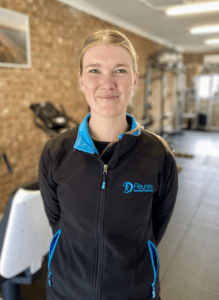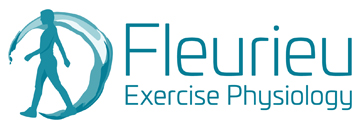So, the chances are that you have clicked on this blog because you have been diagnosed with Polycystic Ovarian Syndrome (PCOS), might be trying to support someone with PCOS or, like me, you’re interest in this area! I want to help you understand PCOS is and how it works. It sounds daunting and scary, and unfortunately like a lot of medical conditions there is a lot of misinformation about treatment options. The main thing to remember is that you CAN manage PCOS and there are support options available.
So what is PCOS?
 Polycystic ovarian syndrome (PCOS) is a hormonal disorder which affects one in ten women of reproductive age. What is a hormone you ask? Well, hormones are chemicals that are naturally produced and distributed by our blood stream. They send messages to different parts of the body, helping to control our growth, energy, digestion, temperature and even our reproduction/sexual function. In women with PCOS, hormones called androgens and insulin are made in higher levels.
Polycystic ovarian syndrome (PCOS) is a hormonal disorder which affects one in ten women of reproductive age. What is a hormone you ask? Well, hormones are chemicals that are naturally produced and distributed by our blood stream. They send messages to different parts of the body, helping to control our growth, energy, digestion, temperature and even our reproduction/sexual function. In women with PCOS, hormones called androgens and insulin are made in higher levels.
What role do these hormones play in PCOS?
Unlike the name suggests, PCOS does not just affect the ovaries. It is believed that increases in insulin start to cause the function of our ovaries to change over time. These changes include the overproduction of androgens (male-type hormones) which prevent the ovaries from releasing eggs (ovulating) and causes irregular menstrual cycles. While we are not sure why these changes occur, it does seem to be linked to family history, environment, and lifestyle. In fact, if you have PCOS there is a 50:50 chance that one of your immediate female family members has or has had PCOS also.
What are the symptoms?
PCOS symptoms may be different from person to person and change over someone’s reproductive life. One of the most important symptoms you might have heard about is insulin resistance and we chat about this further in a second.
Some other common symptoms of PCOS include:
- Insulin resistance
- Irregular, heavy, or total loss of one’s period
- Infertility due to altered ovary function
- Thinning or loss of hair on the head
- Excessive hair growth on face, chest, buttocks or back
- Oily skin and/or acne
- Weight fluctuations
- Patches of darkened skin
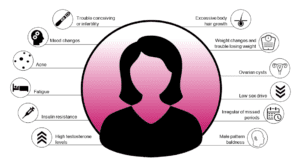 Unfortunately, some people with PCOS are also more likely to have or develop other health conditions. Here are some things to look out for:
Unfortunately, some people with PCOS are also more likely to have or develop other health conditions. Here are some things to look out for:
- Increased feelings of anxiety, low mood, mood swings, feeling down on most days, constantly feeling stressed, reducing participation in things you previously enjoyed or excessively worrying about your body image. Reach out to your GP and seek a referral to someone who can help you understand these feelings and thoughts.
- Shortness of breath or chest pain at rest or during movement. This is important as research is found that people with PCOS are at an increased risk of heart conditions such as heart attacks or strokes.
- Get blood tests yearly to test for early signs of type two diabetes or cholesterol changes.
Your GP can be a wonderful resource. Make sure to bring up any concerns with them.
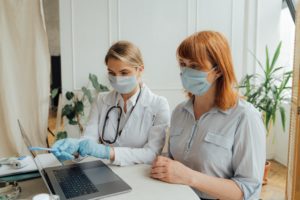
Now, what exactly is insulin resistance?
The hormone insulin is incredibly important as it helps with our metabolism, and to control our blood sugar levels by turning the food we eat into energy. Insulin is made by our pancreas and released into the bloodstream. In PCOS, the body is not able to efficiently use the sugar in our blood for energy, causing our blood sugar levels to rise. Our body is incredibly smart and notices this rise in blood sugar, so it starts to produce more insulin which unfortunately just increases blood sugar levels further. High blood sugar increases the risk of someone developing type two diabetes and unfortunately both are common in people with PCOS.
So…can we help this? Absolutely! Just like in type two diabetes, exercise is really good at helping manage blood sugar levels. In fact, regular participation in exercise can also help to improve other symptoms associated with PCOS.
How can exercise help with PCOS?
Here are some of the ways exercise can help someone with PCOS:
- Improve fertility by increasing ovulation and menstrual regularity
- Improved cardiovascular fitness
- Improved heart health and prevents some heart conditions.
- Improved self-esteem
- Help with symptoms of, or reduce the risk of depression and anxiety.
- Decrease insulin resistance and blood sugar levels
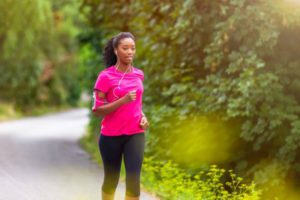
So how do I get these benefits?
Different types of exercise can help to achieve different health benefits. Research has found that it is important to get a mixture of both cardio and strength-based training to maximise the benefits of exercise and PCOS.
Cardio exercise
Everyone’s experience living with PCOS is highly different and for these reasons researchers are unsure the exact amount of exercise that required to get the most health benefit. What we do know is that getting 30 minutes of moderate exercise a day or 150 minutes a week is a great way to start!
If you are returning to exercise after a break or are new to exercise just start with 5-10 minutes a day, this could even look like putting on a good playlist and dancing around! Every small bit counts!
Here are some other great ways to get some more exercise into your day.
- 3 x 10 minute walks around the block
- Walking the dog
- Cycling or jogging
- Dancing
- Walking to your favourite coffee shop before work

If you are not new to exercise or prefer a more vigorous style of exercise such has high intensity interval training, getting 75 minutes of vigorous activity a week can also help to improve your symptoms and health.
Muscle strengthening exercise
It is also important for our health and hormones to complete muscle strengthening exercise, also called resistance exercise. This is best completed 1-2 x weekly on non-consecutive days and should incorporate all the big muscles in our body. If you like doing your own thing this could be done in a gym, outdoor equipment, a clinic such as ours or in your house or backyard. If you prefer exercising with other people have a look at group programs within your local community.
It is important to mention that exercise should not cause you pain or discomfort. If you are not sure when, how or where to start, have a look at our blog on creating long term habits to help get you started and talk to an Exercise Physiologist close to you to determine the best way to maximise your health goals.
Author: Madelin Warner, Accredited Exercise Physiologist
